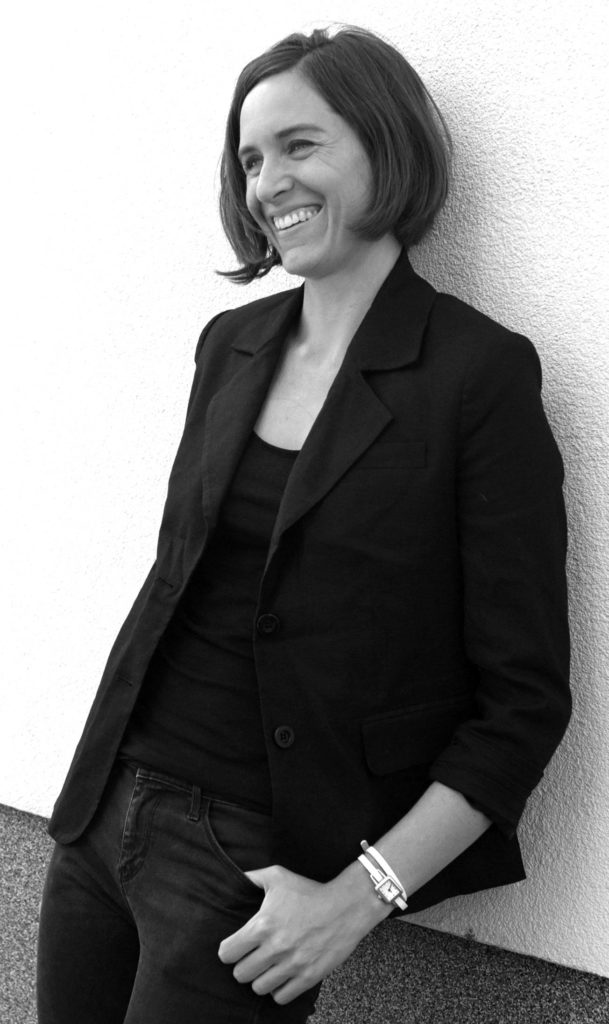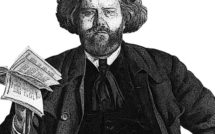

As a doctoral student in the history department at Columbia University, Hannah Elmer focuses on the cultural, religious, and intellectual history of late medieval and early modern Europe. More specifically, she examines the once common practice of reanimating deceased infants for emergency baptism. Elmer’s research on the subject is fascinating, but even more so are her motives behind studying it. She goes beyond analyzing catalysts for religious revolutions and shifts in cultural norms, driven to understand the logic and firm rationalization of this phenomenon. Through her research, Elmer says, she aims to discover “what the world needs to look like in order for the seemingly bizarre to make sense.”
—Kayla Maiuri for EuropeNow
EuropeNow Can you tell us a little about your research?
Hannah Elmer Starting in the thirteenth century, people sought to miraculously reanimate their infant, sometimes by invoking certain saints at home, and sometimes by transporting them to certain chapels or shrines. These practices increased over the following centuries so that by the end of the fifteenth century, some of the sites were drawing dozens to hundreds to occasionally even thousands of cases over the course of a few decades (the specifics vary greatly between the locations). After the Reformation, emergency baptism became a particularly Catholic concern, and practices continued to flourish well into the eighteenth century. Interestingly, people frequently sought only to reanimate the infants temporarily—they were not looking to have the child come back and live a long, full life (though this occasionally did happen), they were just trying to have it become alive enough to be baptized.
EuropeNow For someone who has never heard of this practice, how would you explain it to them?
Hannah Elmer Since most of the documentation about these cases comes from the miracle collections of various saints (or chapels dedicated to the Virgin Mary), divine intervention on behalf of the respective saint is presented as the force behind the reanimation. Usually people accessed this power through profuse prayer and physical offerings (e.g., candles). However, in some cases, the infant would be brought directly to the saint’s tomb, where proximity to the holy body was seen as the impetus for change. Some of the few non-miracle-collection sources describe techniques of heating the corpse over hot coals or rubbing its limbs; this would take place before a sacred image or holy altar within a church or chapel. In some very marginal cases when the child was not expected to live long, the attendants would search for various signs of life (changing skin tone or sweat), sometimes checking for breath by placing a feather over the child’s mouth.
EuropeNow At first glance, this topic is inherently bizarre. What inspired your research?
Hannah Elmer The bizarreness of the topic was one of the major draws. Certainly some of the strategies people employed to deal with the problem of an unbaptized infant are quite foreign to most of us today, and in many cases, the underlying concerns themselves may verge on irrelevance. So, for me, the topic poses the challenge of how to make the seemingly strange make sense, so that we can abandon explanations of “they were crazy, ignorant, silly etc.” If we assume from the start that the people seeking to reanimate the babies were as rational as we are, but were operating under a different set of logics, then it becomes a matter of figuring out what assumptions about the world they needed to have for their behavior to make sense. This requires two levels of inquiry: first, the motivating concern; second, the solutions. As becomes almost immediately clear, resuscitating these infants, while seemingly a very specific and possibly marginal topic, is actually at the nexus of a number of major issues for pre-modern Europe (and to a certain extent for modern Europe too, as some of these reanimations were attested well into the twentieth century). It involves questions about the line between life and death, and how people can manipulate that line—either by their own power or with the aid of the supernatural. Further, the reanimation practices confront problems of social inclusion for both the infants and their families. Since baptism was the means by which a person became a full member of Christian society (which covered the majority of the European population), and was necessary for burial in consecrated ground, its lack had real consequences for this world and not just the afterlife. So the urgency to find a solution to the problem is not so shocking. That they believed they could do something about a dead infant—and the techniques they developed in response—those aspects require us to be more imaginative in our ideas of how the world can work.
EuropeNow In your article in Perspectives on Europe: European Solidarity “Securing Salvation: Resuscitating Dead Infants for Baptism in Later Medieval Central Europe” you mention guardians and religious authorities physically manipulating the bodies of the infants (heating them over a basin of hot goals, rubbing their limbs) in an effort to induce these resuscitations. Why did people believe they could and should resuscitate their infants? What caused this phenomenon to occur?
Hannah Elmer The most straightforward answers emerge from the contexts of pastoral care and theology. Especially over the course of the thirteenth century, when we start seeing more cases of infant resuscitation in the miracle collections of the saints, major changes were taking place in the religious cultures of Europe. In some regions, many new parishes were created, and everywhere new religious orders (e.g., the mendicant orders, so Franciscans, Dominicans and the like) emerged to help with the spiritual needs of the laity. As the parishes expanded and the friars proliferated, they helped foster the lay religiosity that had been intensifying. More people became more aware of the importance of the sacraments. From a theological perspective, the phenomenon makes sense as a response to ideas about original sin and salvation. Very briefly, the problem has its roots in the writings of St Augustine (354-430), who in protecting the necessity of the sacraments against the position advocated by the Pelagian Christians, insisted that original sin could only be cleansed by baptism, and without first being cleansed, the soul was unfit to be in the presence of God. Thus, no baptism, no salvation. Though there are some exceptions to this, and the problem remained/remains a key one for theologians, it wasn’t until the second half of the twentieth century that infant salvation without the sacrament began to become thinkable. Moreover, during the twelfth and thirteenth centuries, just as the pastoral care efforts were expanding, people began mapping out the afterlife with a new theological rigor. The issues were being made more precise while they were being more widely disseminated. These are some of the reasons why the problem took on a new urgency during this period, but it doesn’t explain why people thought there was something they could do about the dead bodies—that’s what the rest of the dissertation examines.
EuropeNow Did you discover anything particularly surprising in your research?
Hannah Elmer A number of the resuscitated stillborn infants went on to live long, full lives—and a handful of the male ones ended up having serious careers in the Church. In modern medical parlance, we might be able to think of some of these cases as “suspended animation,” but diagnosing historical cases with modern medical conditions is fraught with a number of theoretical and other problems. In any case, today there are still cases of infants appearing to be stillborn who end up reviving later. A few years ago, a story was circulating about a stillborn girl in Brazil who was placed on the altar of the hospital’s chapel and came to life three hours later. Maybe my research isn’t so far removed from the present after all.
EuropeNow Can you explain to us the objective of a historian, and why this type of research is necessary?
Hannah Elmer There are many objectives motivating historians, but I think they ultimately boil down to a desire to investigate the past in order to better understand the present. Sometimes this is reflected explicitly in the project—a history of the United Nations, for instance. But projects like mine, which look at things not particularly present, expose a wider range of beliefs, practices, institutions etc. than we typically encounter and thereby contribute to a broader understanding of what it means to be human. More specifically, historians are concerned with problems of how things change over time (which applies just as much to explaining things that persist as those that emerge or disintegrate). Understanding the elements of change—its various factors and how they interact—is essential to a deeper knowledge not just of the specific subject at hand but of the bigger picture as well, because change is the only truly consistent thing in our lives.
EuropeNow Why is it important for someone who is not in academia to understand the cultural, religious, and intellectual history of later medieval and early modern Europe?
Hannah Elmer Most fundamentally, it’s the same reason why it’s important in general to understand different ways of life. By exposing ourselves to other logics, we can see our own social and cultural configuration as something less fixed. It’s obvious that things weren’t always the way they are now, but it’s harder to recognize how un-self-evident our core attitudes and ideas about the workings of the world are. For instance, most people growing up today, at the very least in western societies, probably see the vertical growth of a tree as a result of its need for sunlight in photosynthesis rather than its striving to be closer to God. But such a chemical conceptualization of the physical world is a very recent phenomenon, and it brings with it a whole array of other assumptions. This applies to many other ideas. For people outside of academia, understanding such differences is often simply interesting, but its also important for recognizing the deeper consequences of our present choices. It helps us see what’s at stake and how other people have responded to similar changes. By recognizing our own limitations through encounters with things so different, we might become more tolerant, and we hopefully become more open to learning new things. Of course, I’m not advocating we rush out and adopt medieval resuscitation techniques—but the imagination and empathy required of us to understand such techniques, I think most people will agree, are worth cultivating.
Hannah Elmer is a PhD Candidate in the Department of History at Columbia University, where she specializes in the cultural, religious, and intellectual history of later medieval and early modern Central Europe. Her fieldwork has been supported by Fulbright; the Council for European Studies; the Institute for Religion, Culture, and Public Life; and the Medieval Academy of America. Before beginning her PhD in 2011, Hannah lived, studied and worked in Vienna, Austria and Berlin, Germany.
Kayla Maiuri is the editorial and publications associate at the Council for European Studies, and the associate editor of EuropeNow. She holds an MFA in fiction from Columbia University, where she served as fiction editor of Columbia: A Journal of Literature & Art. She is currently working on her first novel.
Published on January 5, 2017.




